The things we don’t see are on display in Gallery 360’s new fall exhibition
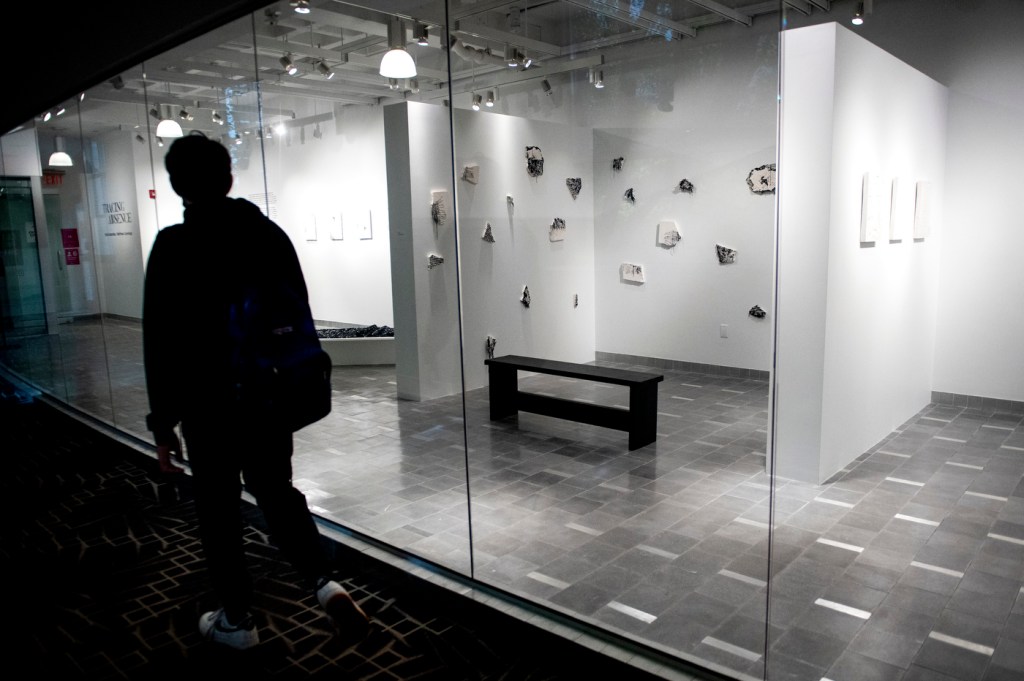
Information is anywhere and everywhere. It is all around us and within us. Algorithms, big data, software code, and the internet seem to offer us everything we ever wanted to grasp, and yet we feel so disembodied, so separated from it all.
This maelstrom of external information, and how forms of data and experience live in the body, are the juxtaposing themes in Tracing Absence, the new fall exhibition in Gallery 360.
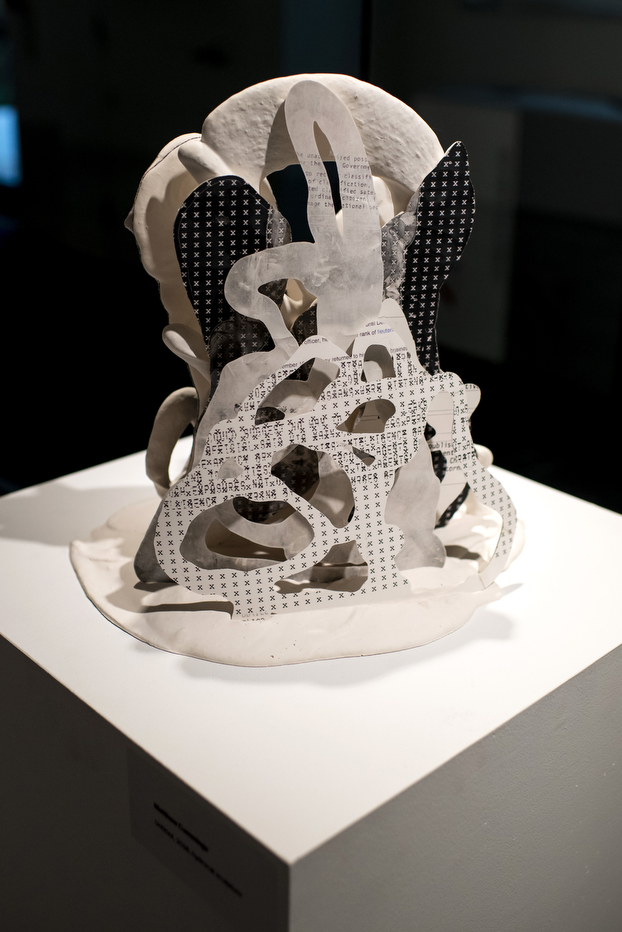
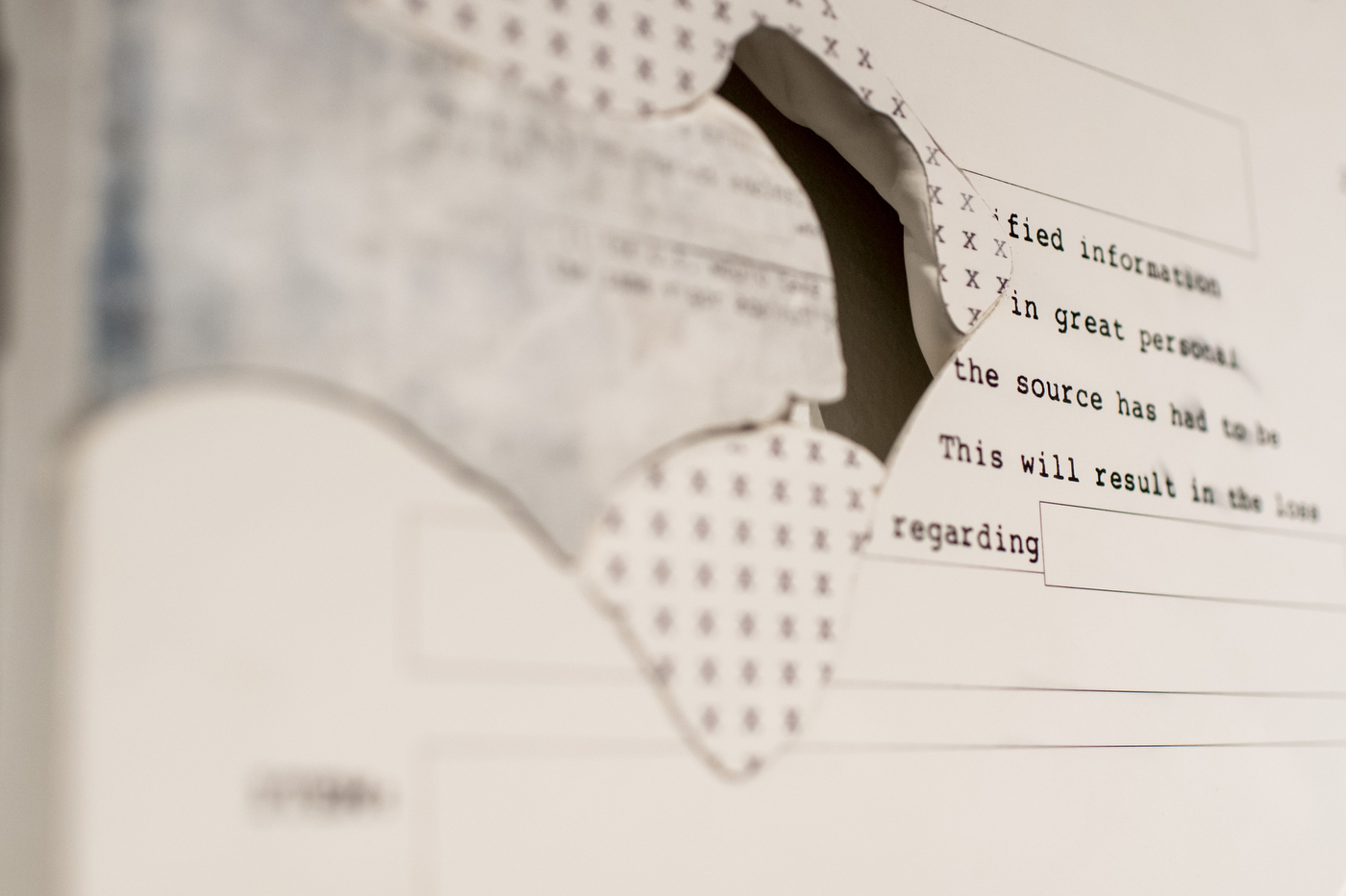

It brings together the large-scale textile and hydrostone works of Fafnir Adamites and experimental print and plaster pieces by Matthew Cummings. The artists investigate forms of withheld information in explicitly material terms, setting their work within the context of our dispersed, data-driven, digital age in which it’s harder than ever to get your hands on full disclosure and truth.
The exhibition encourages the public to understand that the circulation, dissemination, and framing of information is not neutral: We need to be active, critical participants in the interpretation process. Adamites and Cummings draw attention to the constructedness of information.
In joining the works into one exhibition, “I just started putting the two together in my mind where one of them, Matthew Cummings, is exploring the ways in which information around us is variously legible, illegible, made visible, and kept from us,” explains curator Amy Halliday, director of Northeastern’s Center for the Arts.
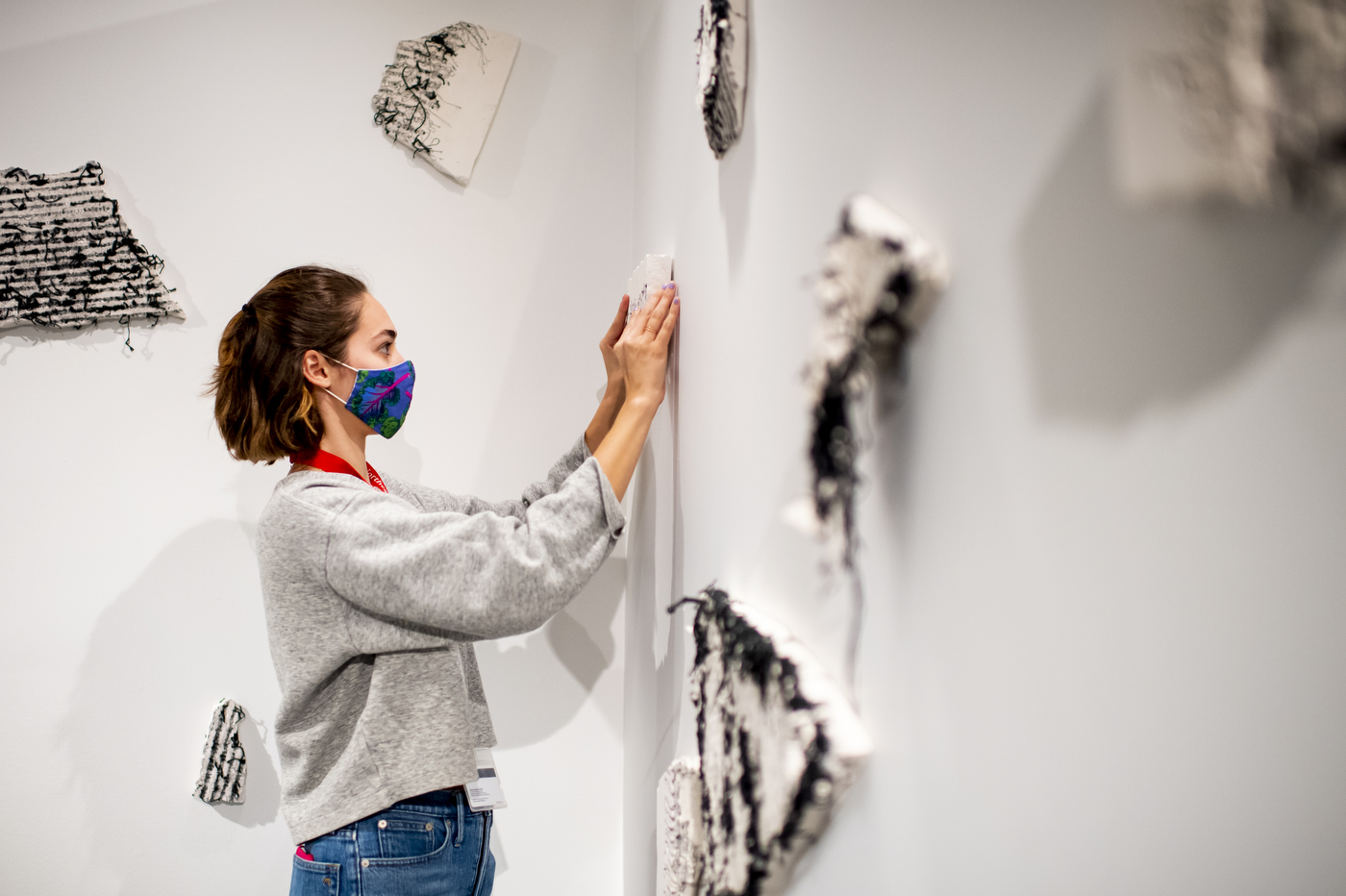
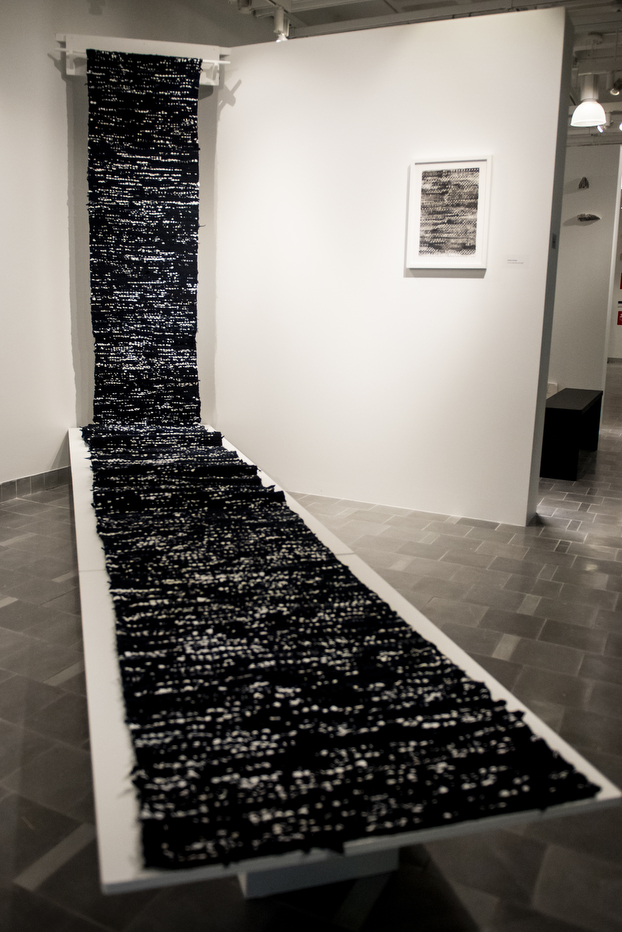
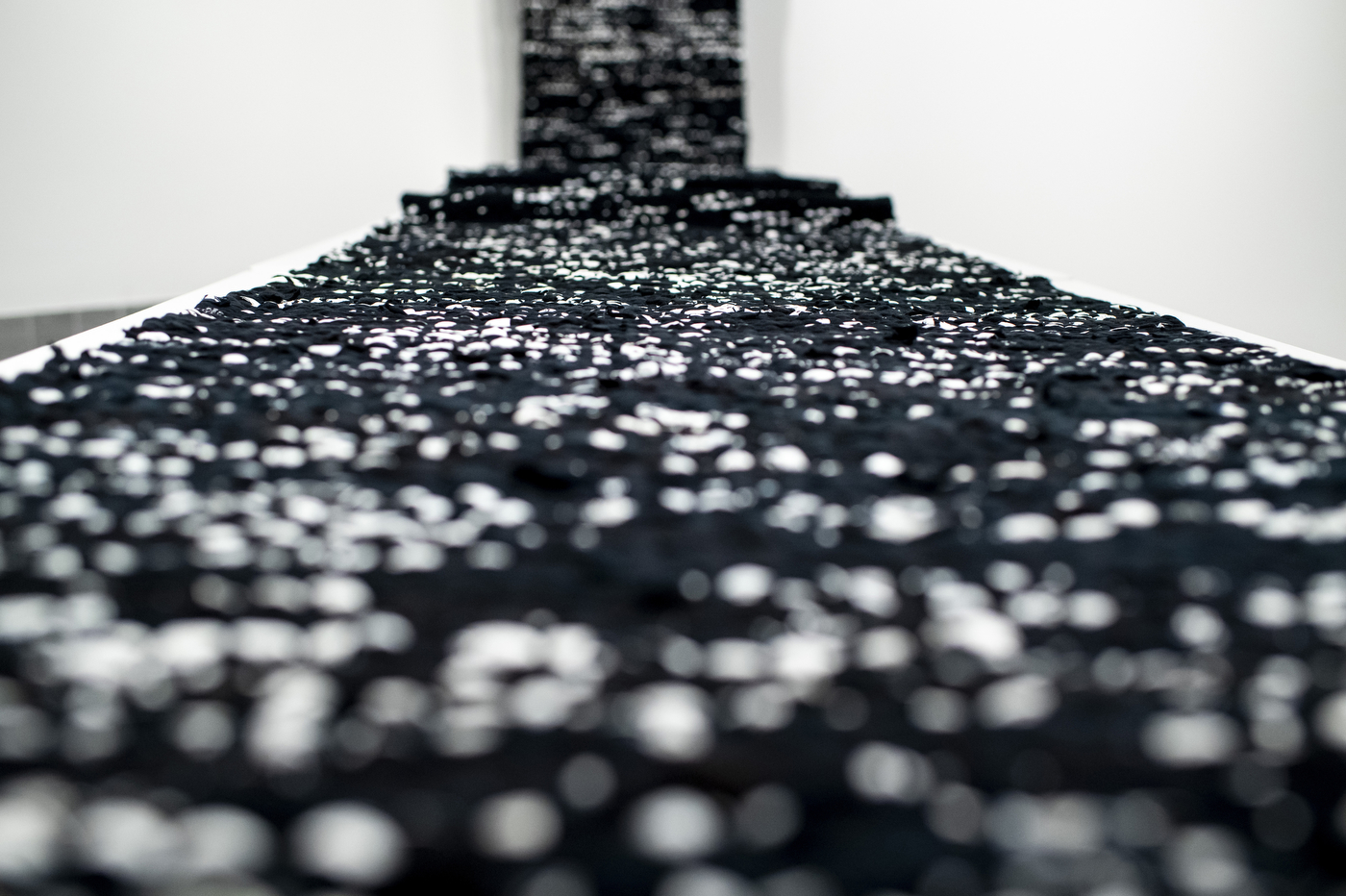
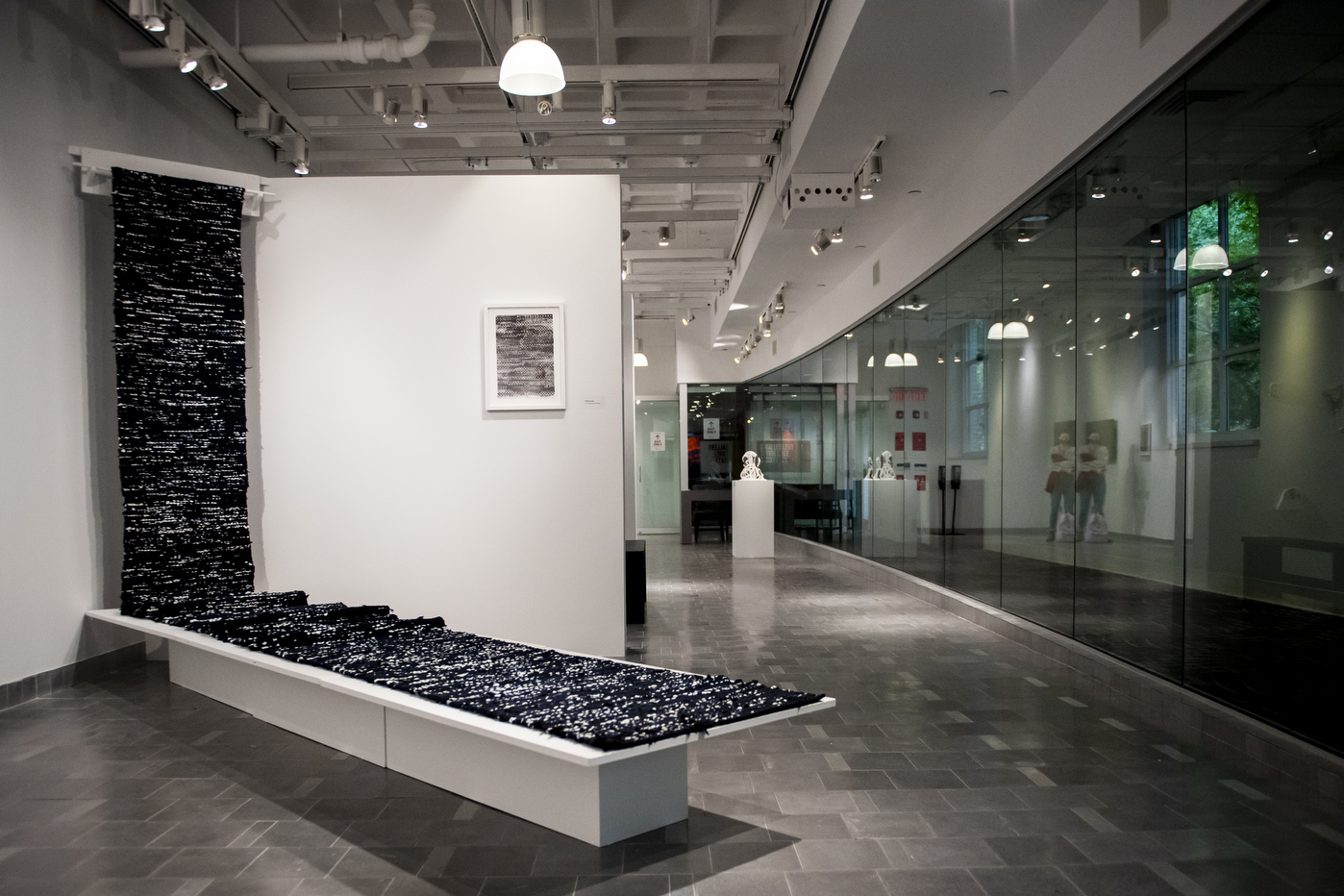
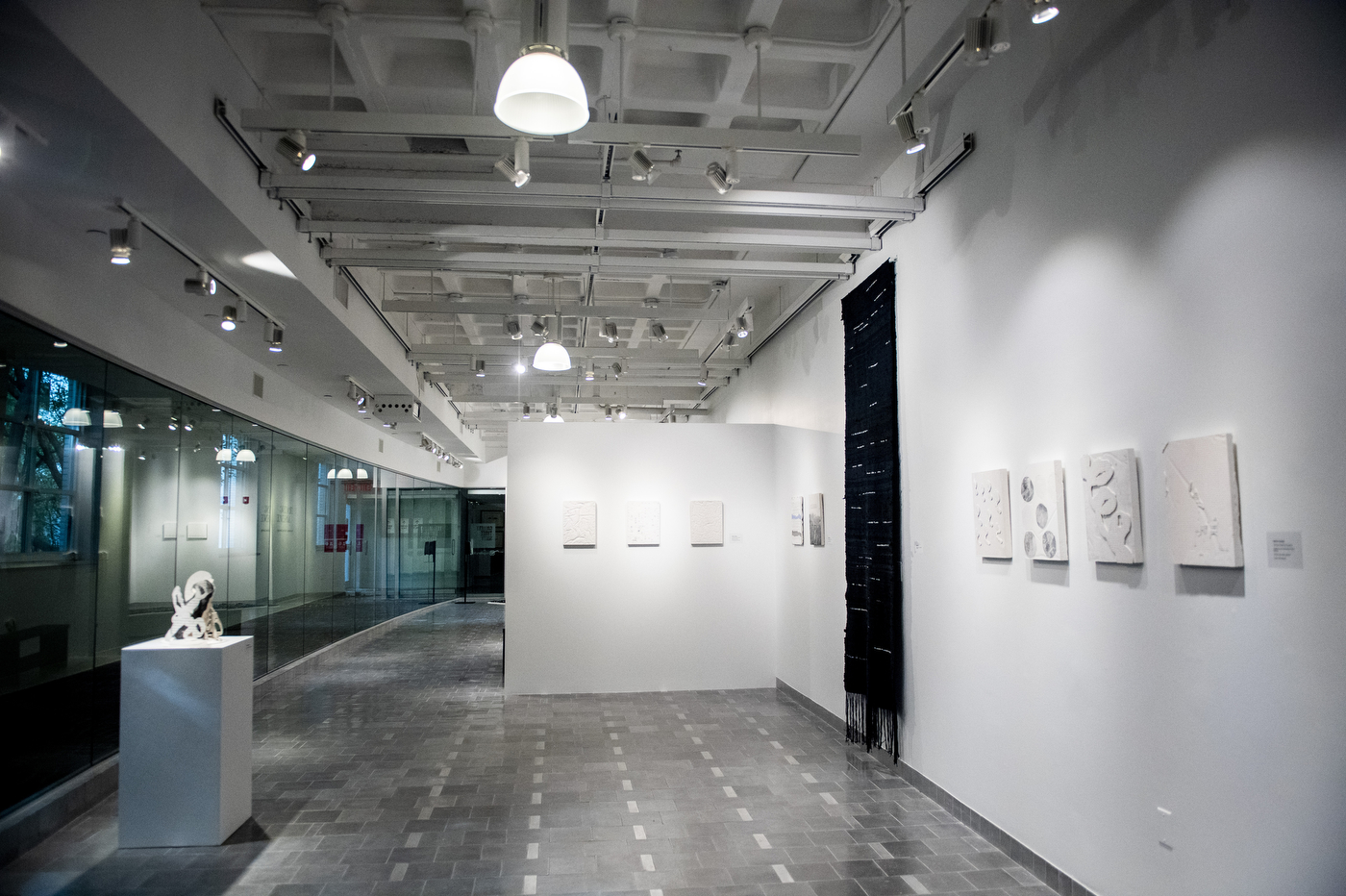
“The other artist, Fafnir Adamites, is thinking very much about how information (in the form of intergenerational trauma) lives in the body and becomes salient in unpredictable ways. The idea of the trace then becomes really important. The evidentiary trace, what is left behind, what we see and what we know.”
In the midst of a global virus, the term “trace” is also evocative of contact tracing, bringing an additional resonance to our engagement with the exhibition.
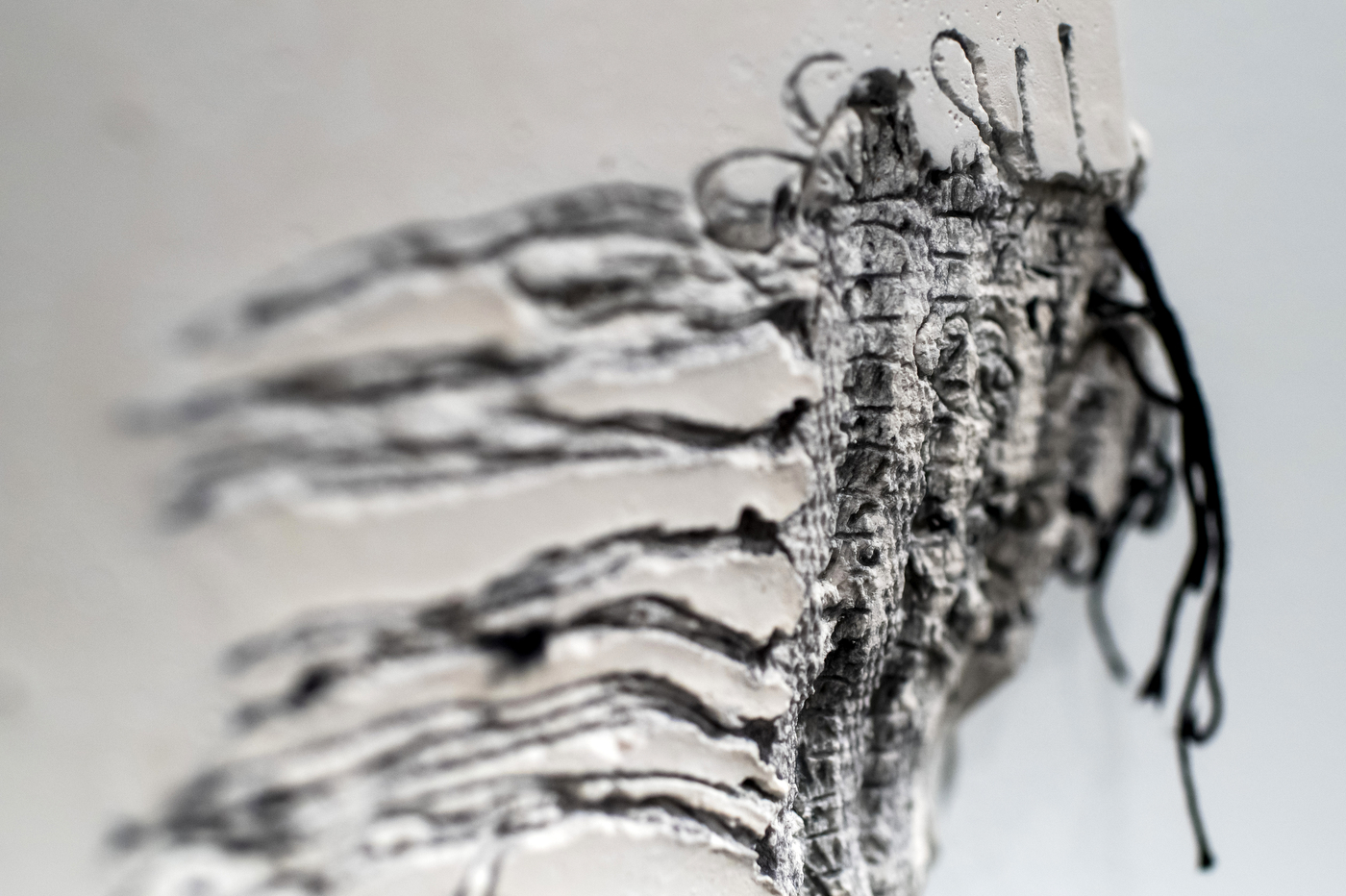
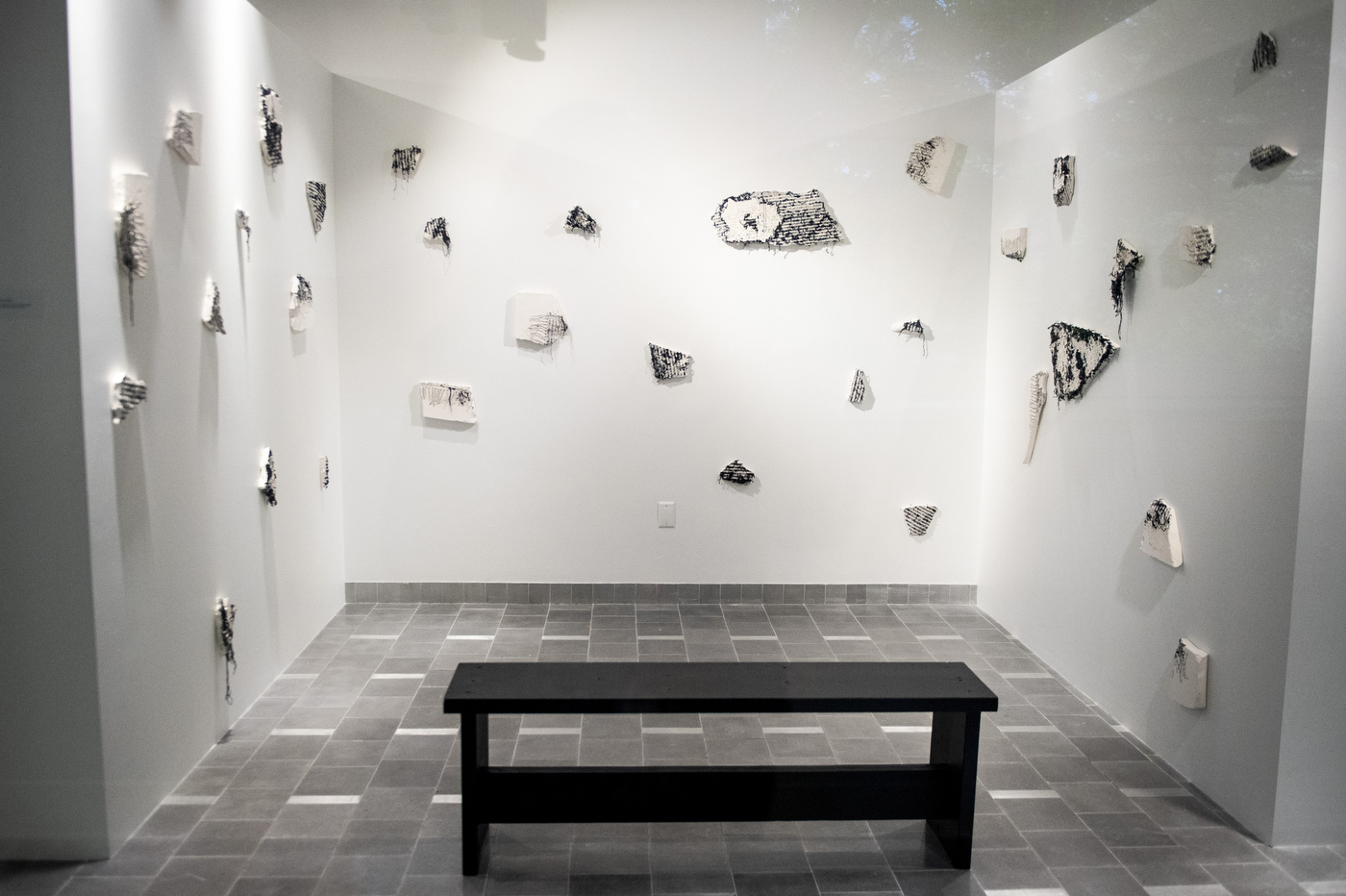
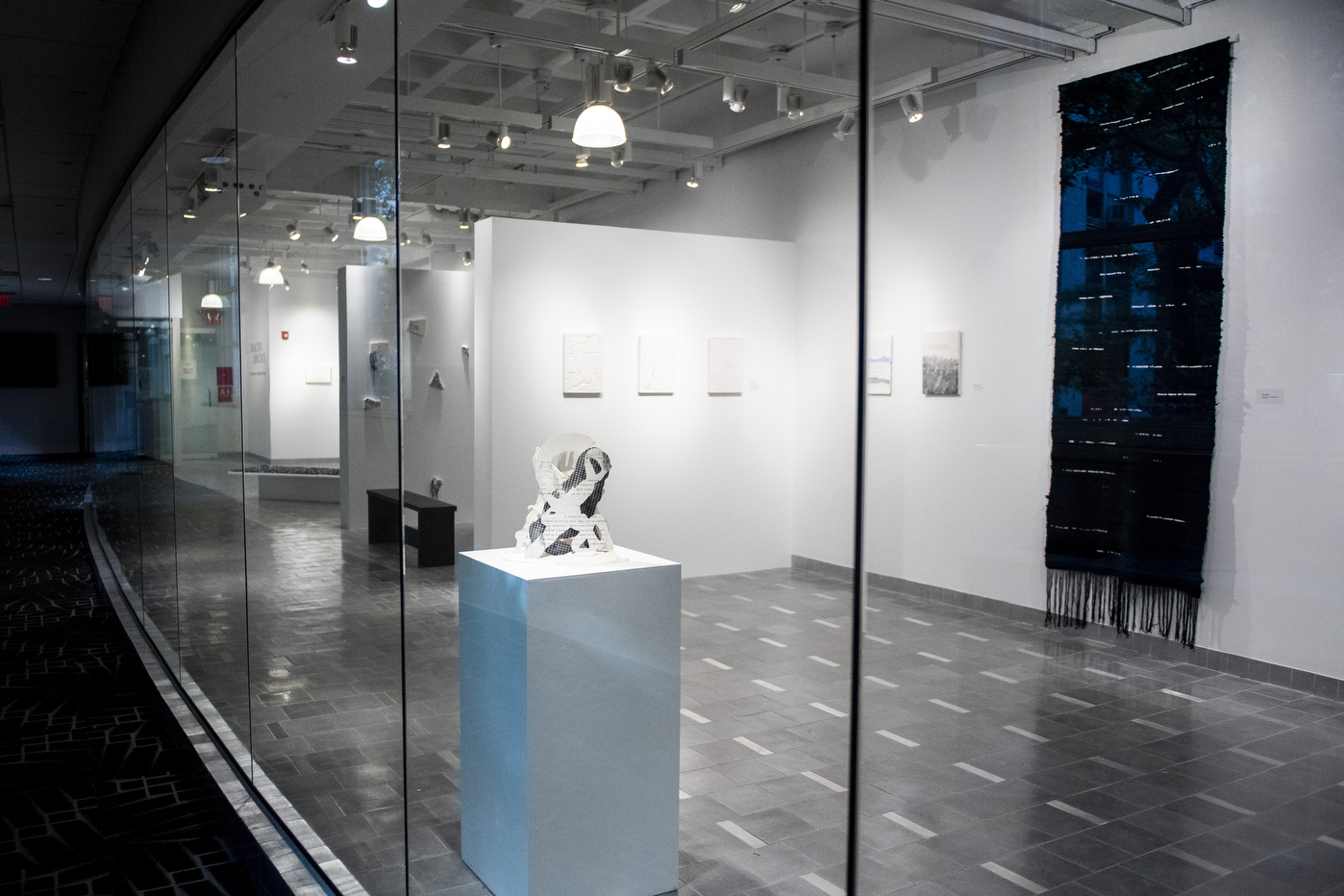
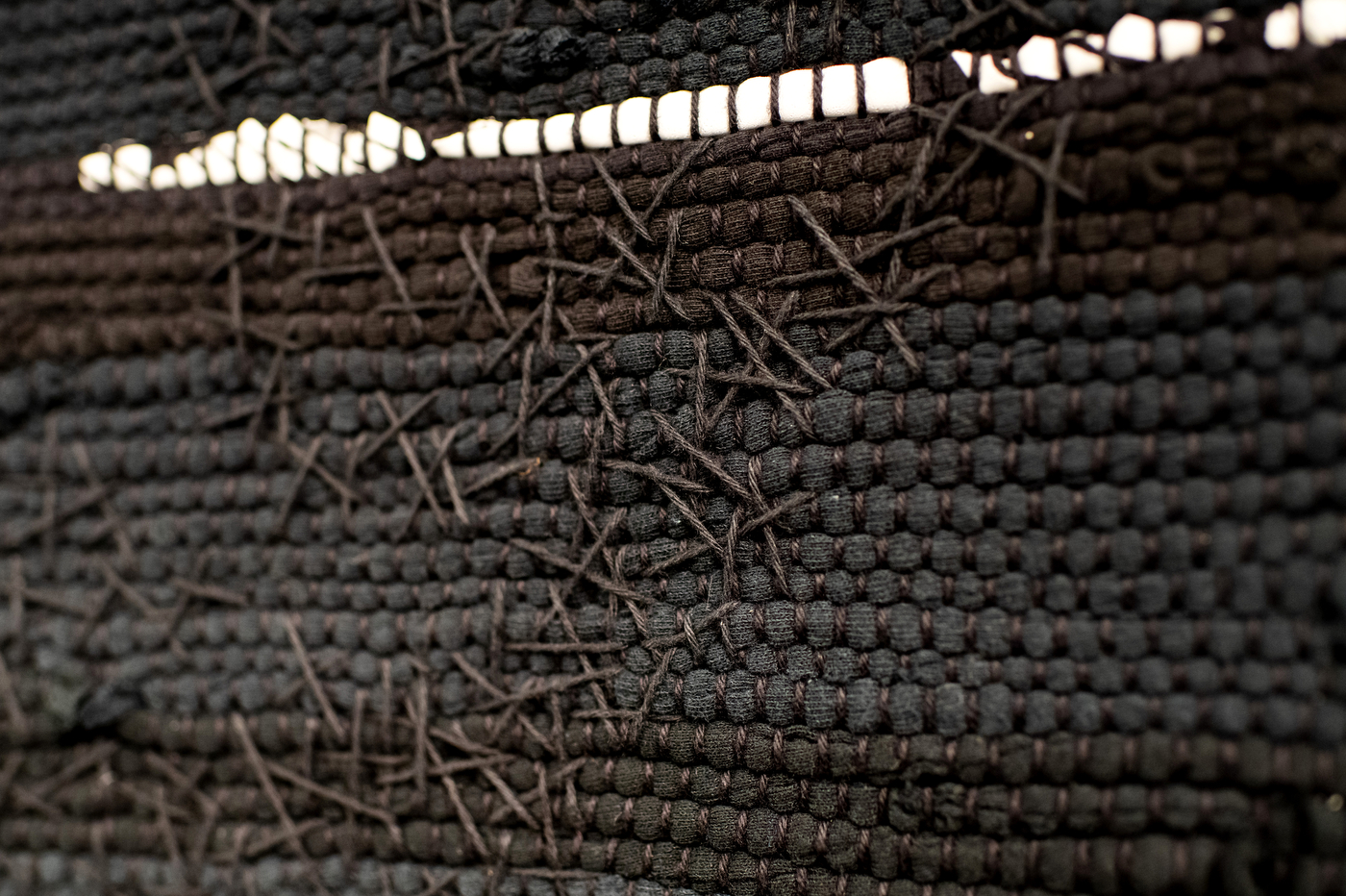
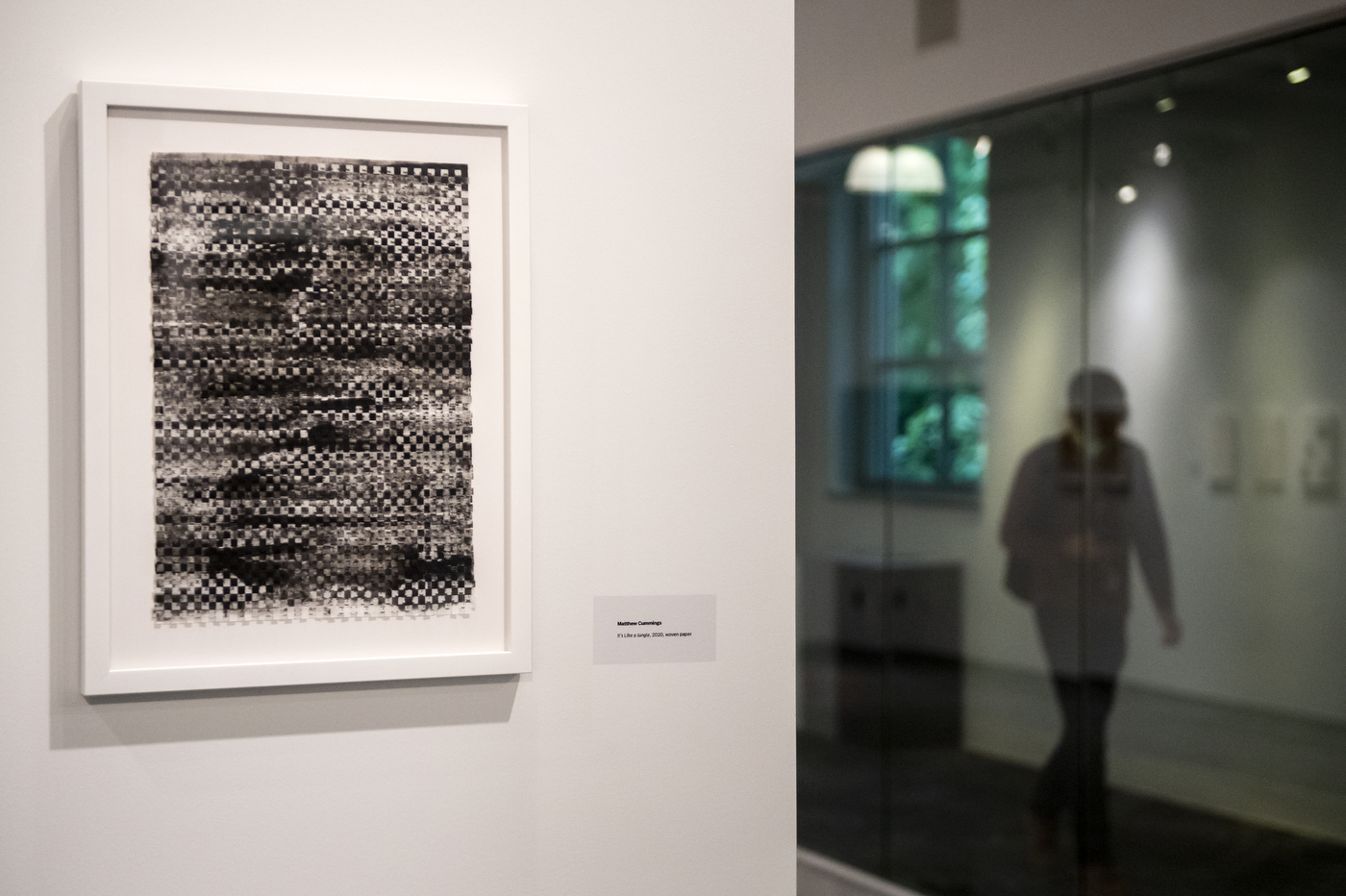
Tracing Absence runs through the end of January. To limit the spread of the coronavirus, Gallery 360 is open only to Northeastern students, faculty, and staff with a maximum capacity of six visitors at a time. It is open Monday through Saturday, 11 a.m. until 5 p.m. Contact Amy Halliday if you are a faculty member who would like to plan a class visit or gallery-based assignment.
For media inquiries, please contact media@northeastern.edu.